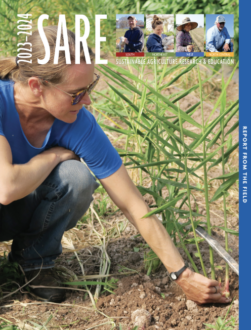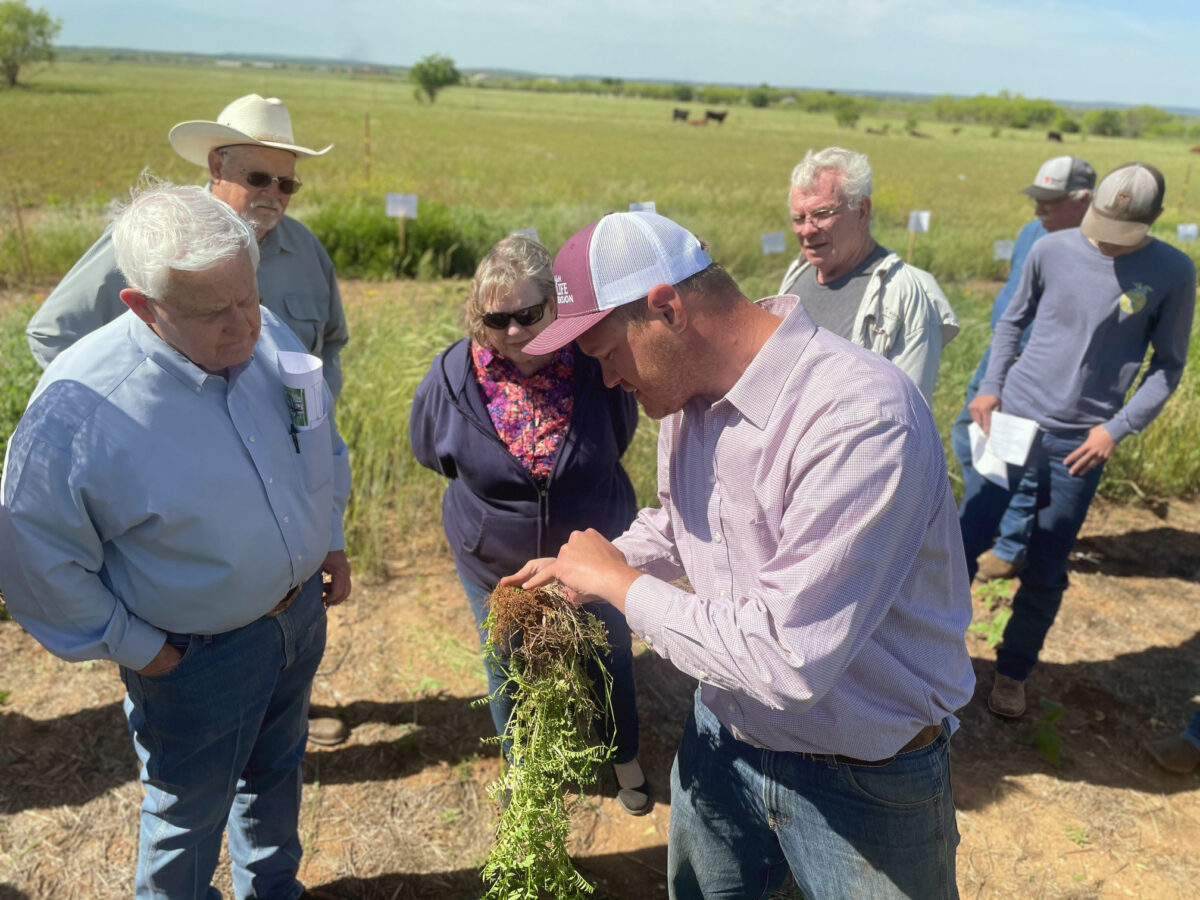
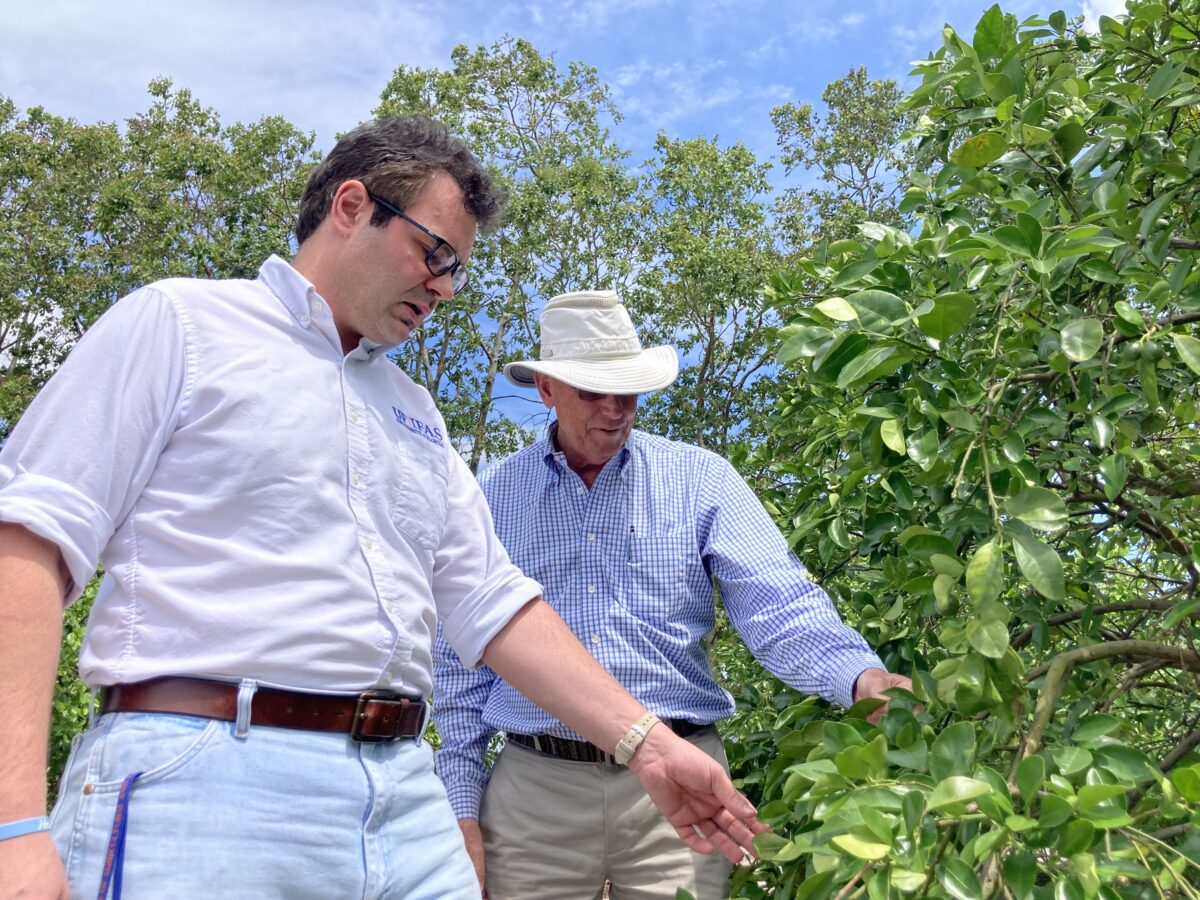
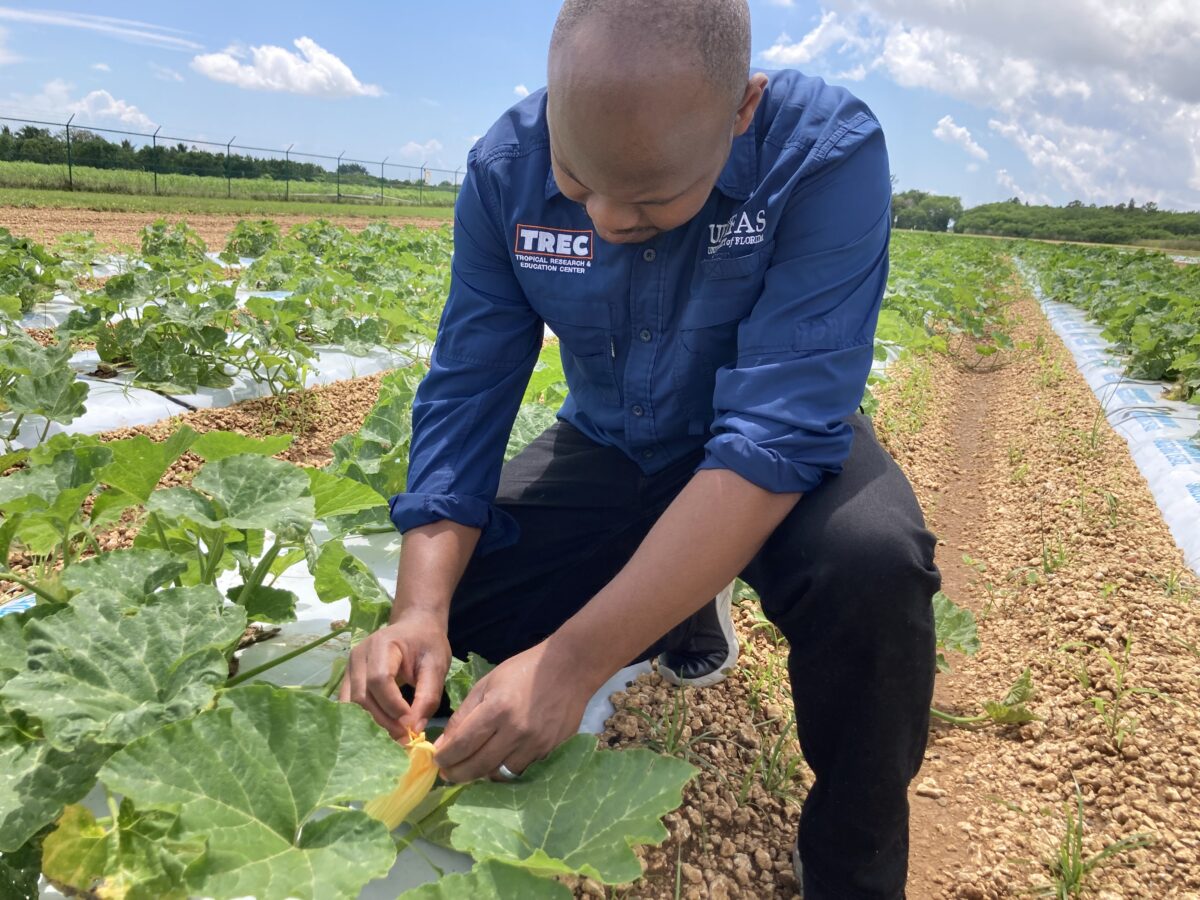
Recent Highlights from the Southern Region
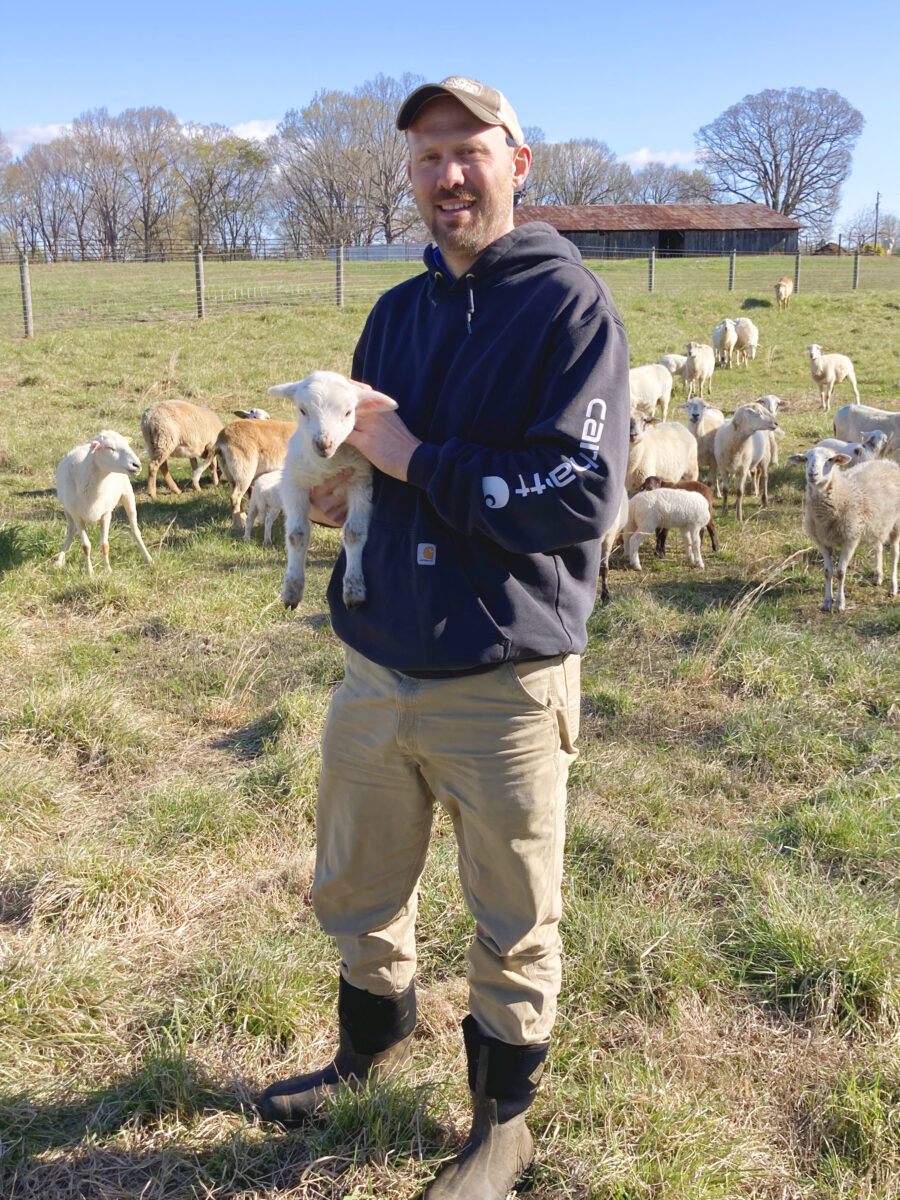
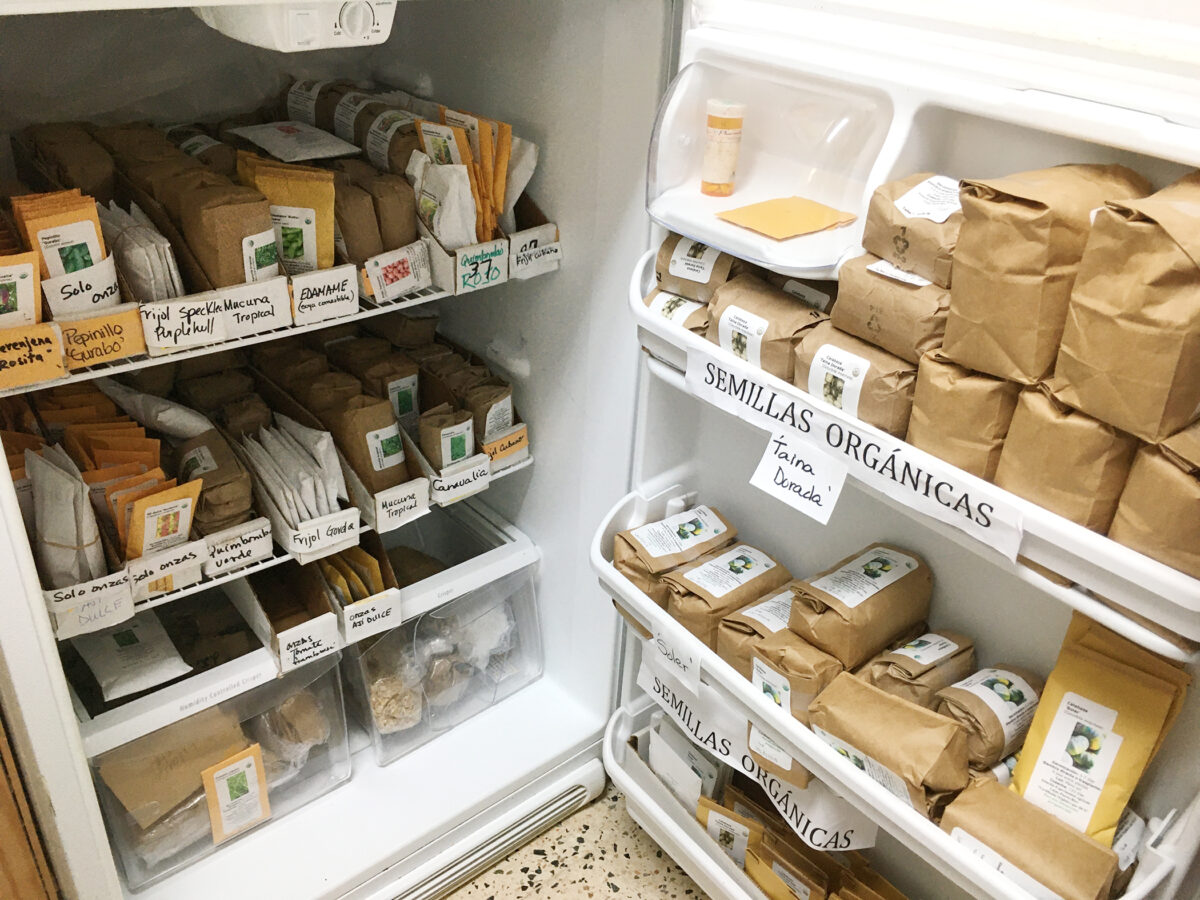
Total Grant Awards 1988-20231
1,518 GRANTS
$92.4 MILLION
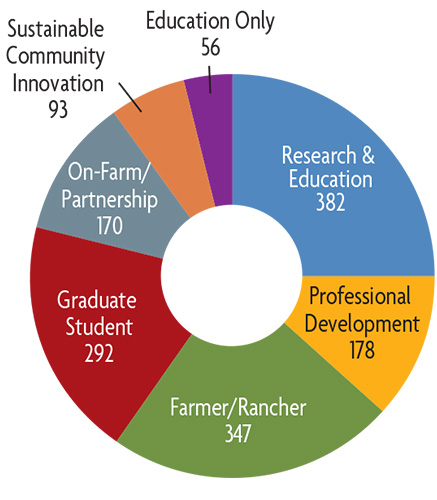
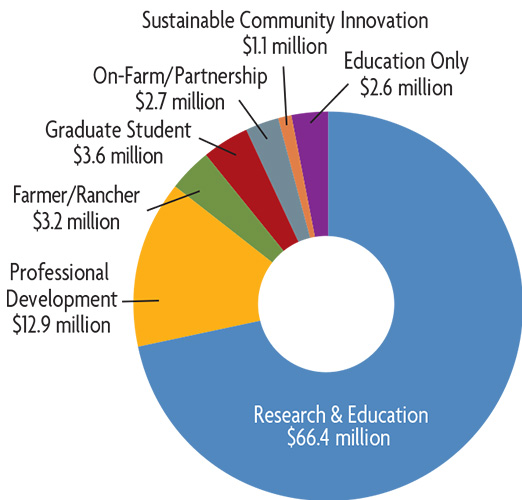
Grant Proposals and Awards 2022-2023
| Grant type | Preproposals Received2 | Full Proposals Invited | Full Proposals Received | Proposals Funded | Funding Total |
| Research and Education | 145 | 64 | 58 | 26 | $9,081,641 |
| Professional Development Program | 67 | 32 | 30 | 16 | $1,160,949 |
| Farmer/Rancher | N/A | N/A | 112 | 22 | $314,083 |
| On-Farm Research/Partnership | N/A | N/A | 74 | 21 | $492,856 |
| Graduate Student | N/A | N/A | 199 | 43 | $666,877 |
| Education Only | N/A | N/A | 58 | 25 | $1,103,882 |
1These totals exclude additional direct funding given each year to Cooperative Extension in every state to support state-level programming on sustainable agriculture.
2The use of a preproposal process varies by region. It serves to screen project ideas for the larger and more complex grant programs, and to reduce applicants' proposal preparation burden as well as the proposal review burden for SARE's volunteer reviewers.
Breeding Better, More Resilient Squash Varieties in the Southeast
The Challenge
Downy mildew frustrates farmers and home gardeners alike. But while it may be maddening for gardeners, a farmer can lose their entire season’s cucurbit crop to the disease and suffer significant financial harm. If more disease-resistant varieties can be developed, farmers in Virginia and across the Southeast may feel more confident investing in cucurbit production. Plus using selective breeding to create resistant crops reduces and potentially eliminates the need for chemical sprays and fungicides, which can save farmers money.
We’ve heard from growers in many
Edmund Frost, co-owner of Common Wealth
parts of the Southeast how South
Anna has been helpful to their
operations. Since then I’ve been
working on crosses between South
Anna and other material to improve
keeping quality and yields while
maintaining the same level of flavor
and disease resistance. We’re close
to a new release.
Seed Growers and Twin Oaks Seed Farm
The Actions Taken
Virginia farmer Edmund Frost, co-owner of Common Wealth Seed Growers and Twin Oaks Seed Farm, received funding from three Farmer/Rancher grants to develop better varieties of winter squash through careful research, selection and breeding. The ideal squash would be disease and pest resistant, produce consistent shape and size fruit, and taste delicious. Importantly, the improved varieties needed to be well suited to the hot and humid conditions of the Southeast.
Frost’s first two projects involved replicated variety trials, and selection from a cross between Seminole Pumpkin and Waltham Butternut squash. The work resulted in South Anna (named after a river near Louisa, Va., where the research was conducted), a butternut squash that stands out for its downy mildew resistance, eating quality and ability to produce well in the local climate. Frost then used the third grant to evaluate and develop new seed stocks by crossing South Anna with other tropical and temperate varieties with a focus on keeping quality, higher yields and other traits. His ultimate goal is to develop one to three varieties that taste great, yield optimally, resist downy mildew and offer uniformity, different flavor profiles and shapes, and improved storage quality.
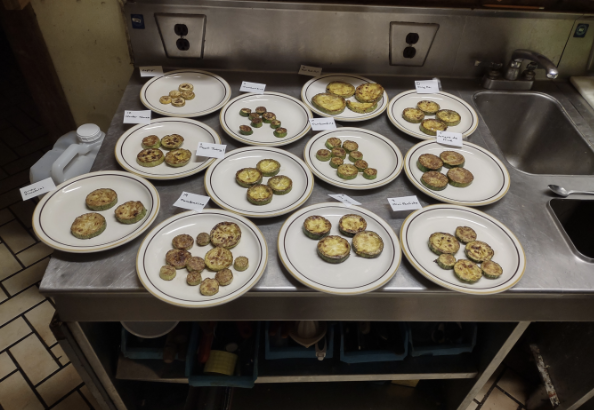
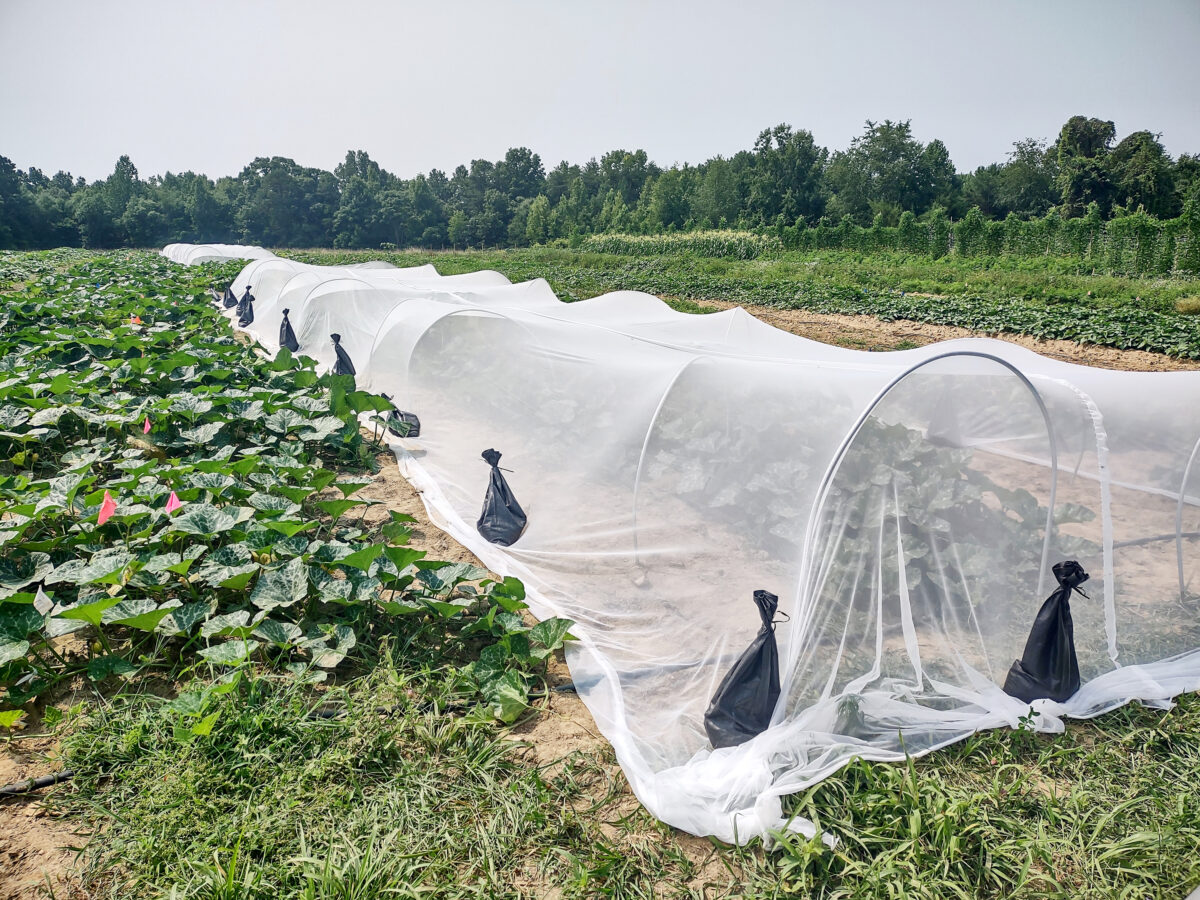
Along with growing trials, members of Common Wealth Seed Growers used taste testing to help identify the best squash varieties for production and marketing in the Southeast. Photo by Edmund Frost, Common Wealth Seed Growers
The Impacts
Frost’s projects have built upon each other, and now South Anna has become a popular squash variety for growers in the region.
Specific impacts include:
- A new, better squash: South Anna, which has been available for sale since 2017 but is improved each year, has shown to have excellent downy mildew resistance, eating quality and productivity.
- More options on the market: Frost’s breeding work and research have increased the availability of resilient winter squash varieties for both organic and conventional farmers in the Southeast.
- Additional research: Frost recently secured a fourth Farmer/Rancher grant to further improve South Anna and other butternut squash varieties for improved keeping quality, yields, Southeast adaptation and resistance to downy mildew, even if the pathogen changes in the future.
Learn more: See the related SARE projects FS20-325, FS16-291 and FS13-273 or listen to a podcast episode where Frost talks about his research and breeding work with butternut squash.
Supporting Farm Business with Financial Planning and Education
The technical details of finance,
A workshop participant
legality, business structures and
goal strategies were just what I
needed to start up this business
with a structure and format that
is set up for success.
The Challenge
Farmers know better than anyone that theirs is not an easy life. In fact, according to the USDA Economic Research Service, 85 percent of new farm businesses fail within their first five years of production. Yet while there are plenty of training opportunities available related to sustainable agriculture practices, there are fewer options when it comes to financial planning, creating a business plan and keeping records. If education on these important aspects of running a business was easier to access and more readily available, new and seasoned farmers alike would be better able to manage their businesses for long-term success and profitability.
The Actions Taken
Margo Hale of the National Center for Appropriate Technology (NCAT) used an Education grant to develop “Take Your Developing business management skills is vital to surviving through the early years of running a farm business. Photo by Lance Cheung, USDA Farm to the Next Level,” a six-part curriculum that covered how to develop business and financial plans, streamline record keeping systems, and improve labor management and marketing. The training series was then provided to an in-person group of farmers over the course of six months. Throughout the course, NCAT experts and other agricultural professionals addressed access to capital, legal issues, business structures, branding and marketing, entering new markets and other specifics of whole-farm business planning. Farmers were given space to share their own experiences and to talk with other participants, and they were provided resource books and publications that complemented the presentations. Once the in-person series ended, the project team converted the workshop to an online format.
Developing business management skills is vital to surviving through the early years of running a farm business.
The Impacts
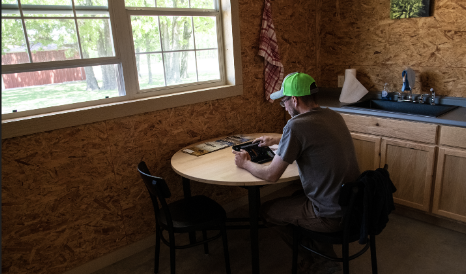
Feedback from the course was very positive; participants felt more confident running their businesses, and they rated the training as a 4.7 out of 5. Specific impacts include:
- One-on-one help: NCAT staff provided technical assistance to the trainees throughout the in-person course and after its completion.
- Future use: NCAT plans to use the online course as a resource for additional beginning farmer training events, and new grant proposals have been developed to improve and expand on the subject matter.
- Learning opportunities for all: “Take Your Farm to the Next Level” is available for anyone to take online through the ATTRA website.
Learn more: See the related SARE project EDS18-03.
Finding the Right Cover Crop Mix in West Texas
The Challenge
Semi-arid regions in western Texas are subject to wind and drought, which can dry out soils, reduce water-holding capacity and lead to erosion. Dryland, no-till wheat rotated with cotton and followed by grain sorghum and non-alfalfa hay crops is common in Texas’ Concho Valley, along with livestock production and ranching. As adoption of conservation management practices has grown in this area, many farmers are intrigued by cover crops but need regionally appropriate information on how to grow them. If a dual-use legume cover crop could be incorporated into seasonal crop rotations, producers in the area would benefit from improved soil health and supplemental forage for cattle, goats and sheep.
The cover crop practices tested
in this project … demonstrate
the potential to provide
high-quality forages to
supplement livestock production
during critical periods.
Reagan Noland, Texas A&M AgriLife Extension
The Actions Taken
Reagan Noland, an agronomist with Texas A&M AgriLife Extension, wanted to find the right cover crops to meet the challenges of farming throughout western Texas. He has used two On-Farm Research grants to evaluate various cover crop species for warm and cold seasons. Nolan worked with four farms in the Southern Rolling Plains and Permian Basin regions to conduct cowpea and sunn hemp trials for the warm season and hairy vetch, Austrian winter peas and sweet clover for cool seasons. Each crop was planted with common grass crops cereal rye and pearl millet to evaluate changes in biomass production, soil benefits and forage potential. While research showed that the warm-season combination of legume covers and grass did not yield substantial biomass and wasn’t well suited to the Finding the Right Cover Crop Mix in West Texas region, cool-season legumes showed more promise. Legumes, particularly Austrian winter peas, planted with a lower seeding rate of cereal rye, increased total biomass and reduced weeds.
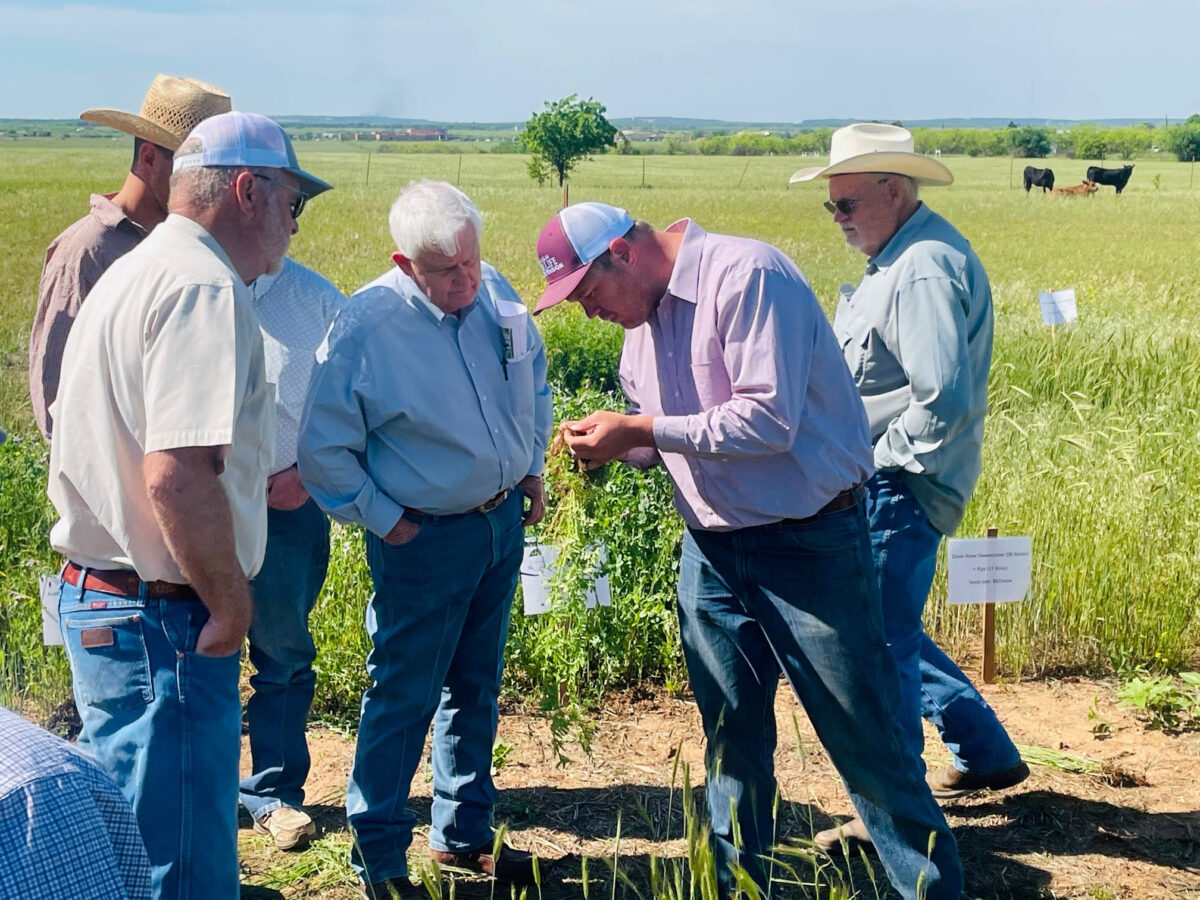
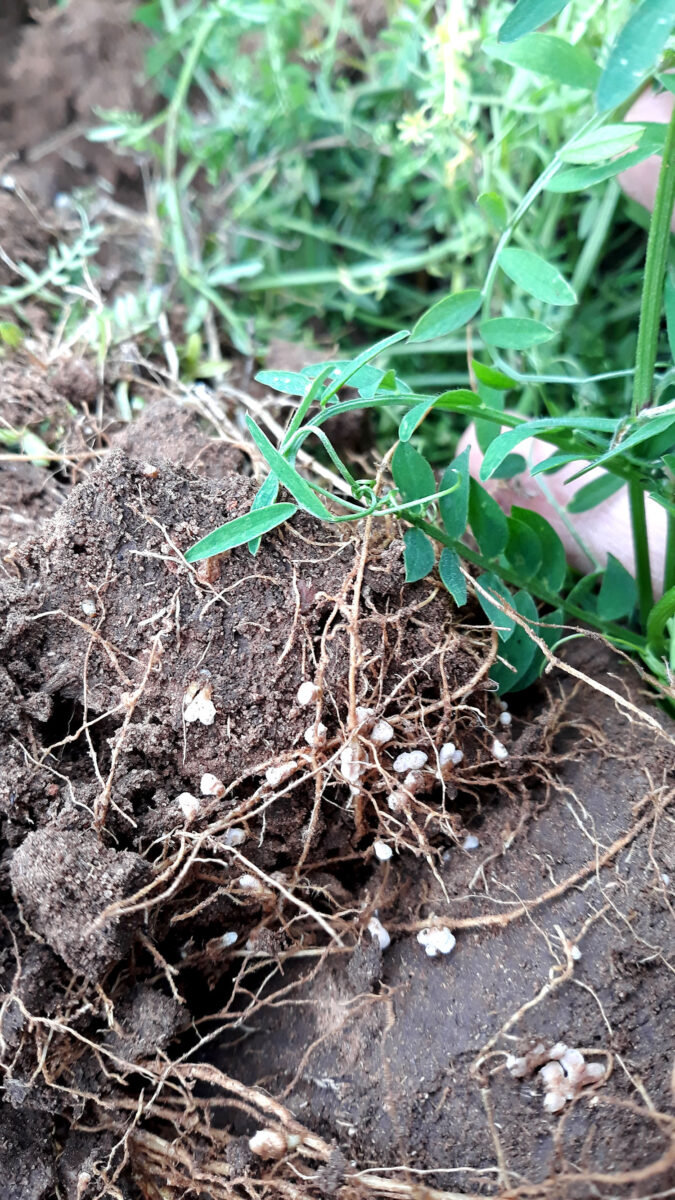
The Impacts
Noland is encouraged by the results. While the research didn’t determine a one-size-fits-all solution for the region’s farmers, Noland believes there is a strong opportunity` for cover crop establishment there, particularly if livestock are integrated to convert the forage to an added value stream. Specific impacts include:
- Reducing inputs: Increasing overall biomass through legume cover cropping improves nitrogen sequestration and may offset the need for synthetic fertilizers.
- Future research: Trial data showed the importance of seeding rates for the right cool-season legume and grass mix, but more research is needed to determine proper rates for success in such a challenging environment.
- Farmer interest: When much of the cotton crop in western Texas failed in 2022 due to intense drought, several farmers reached out to the program for advice, demonstrating a clear interest in the area for low-risk cover crop options.
Learn more: See the related SARE projects OS19-131 and OS20-138.
